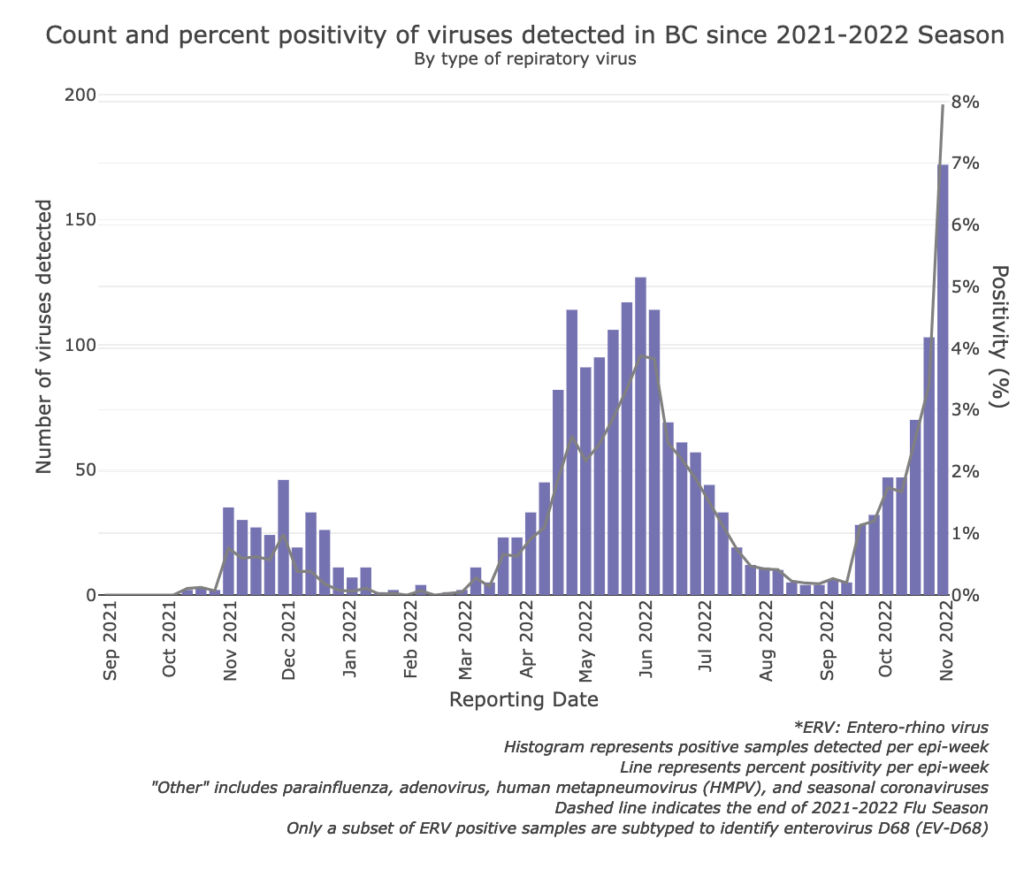Charts
From Jeff’s spreadsheet using MetroVan data:


Flu and colds
Okay, it’s not COVID-19, but other respiratory infections are going to affect COVID-19, particularly influenza. All of them affect hospitalizations. Both COVID-19 and influenza have vaccines which you make appointments for through the provincial GetVaccinated system, they can be mistaken for each other, they both kill… and besides, this is my blog I can do what I want. So I think on Friday’s I’ll give an update on cold/flu information.
From the BC CDC Pathogen Characterization website:


There were 441 cases of non-COVID respiratory viruses on 30 Oct 2022 (the last bar on the chart), while almost a year ago there were 613 cases (on 31 Oct 2021). However, there were 172 influenza cases in the week 30 Oct 2022 and only 35 cases on 31 Oct 2021.
I am really struck by how many RSV cases we are NOT having this year (83 vs. 266 last year), especially since the news from the US and Ontario is that pediatric hospitals are getting slammed, especially by RSV.
This article from 4 Nov claims that BC Children’s hospital is seeing about 20% higher patient volume than last year, but I don’t see it in the numbers. The most recent data I have says there were 157 pediatric respiratory cases in the week of 30 October, vs. 282 a year ago:

If you take out COVID-19, same story — 151 cases this year’s week vs. 196 last year’s week.

I see five possibilities:
- The hospitalization rate per case (CHR) is much higher this year than last year,
- kids are staying in the hospital for longer this year,
- cases are much more unevenly distributed this year than last year, with a lot more in Metro Van (BC Children’s Hospital’s catchment basin) and a lot fewer outside of Metro Van,
- there was a huge increase in the number of kids testing positive between 30 Oct and 4 Nov, or
- the severity was exaggerated in the article.
I’m betting on the latter.
It is quite possible that hospital capacity is down this year because health care workers have been getting burned out and quitting (which is understandable!), but the claim was not that hospitals were running closer to capacity, but that case numbers were higher.
